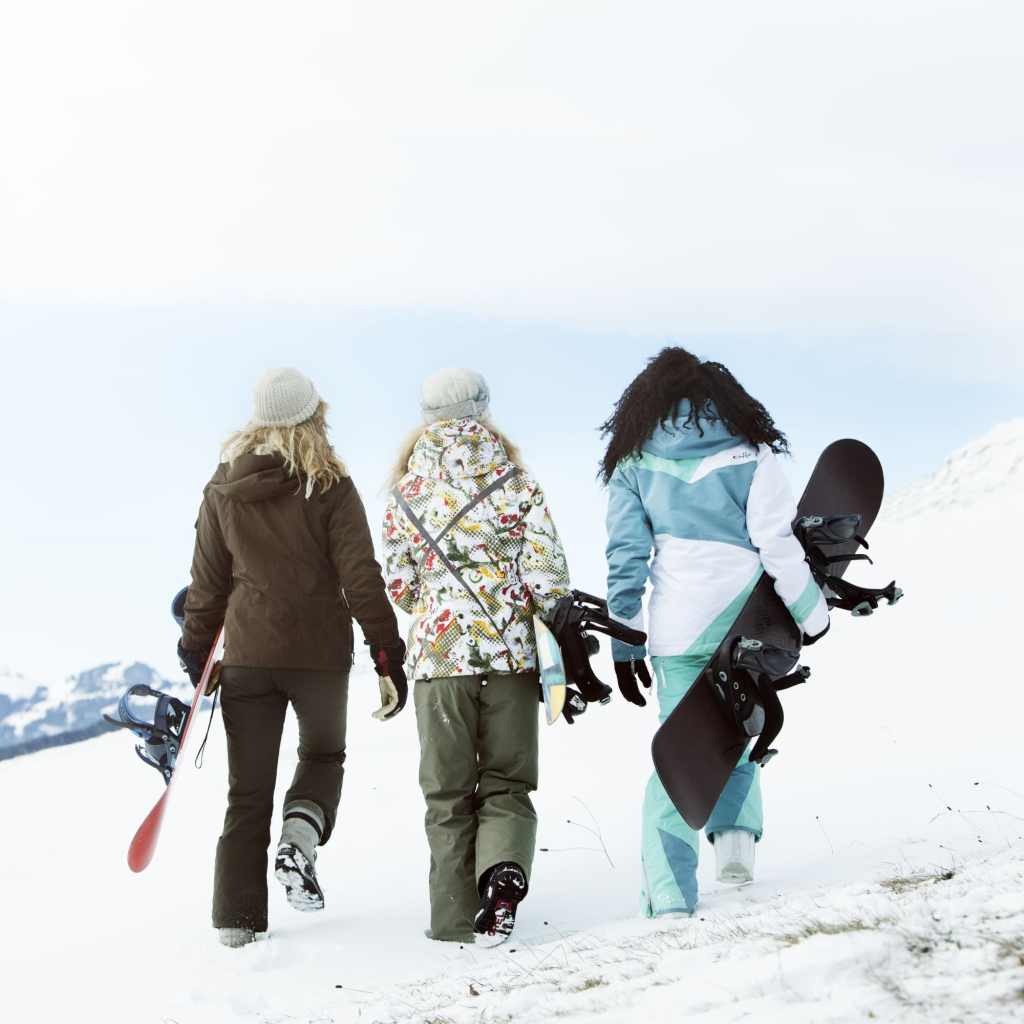You don’t have to be a Red Bull athlete jumping from helicopters into deep powder to consider skiing and snowboarding high-risk sports.
No matter how soft snow looks, it’s far from cushy when you take a spill – especially when tearing down a mountain.
Dr. Scott Faucett, MD, an orthopedic surgeon for The Centers for Advanced Orthopaedics in MD and team physician for the U.S. Ski and Snowboard team, insists traveling fast in any sport can be inherently dangerous – so who are we to say otherwise.
That doesn’t mean you should cancel that trip to Aspen – just take a hint from Dr. Faucett, and be aware of the most common skiing and snowboarding injuries. His tips for avoiding the first-aid lodge, ahead, will help keep you on your game this season.
Common Skiing Injuries
Knee Injuries
Knowing when to call it quits on the perfect powder day may test your patience, but it could prevent the most common accidents among skiers: knee injuries.
According to Dr. Faucett, when a skier is “overtired or simply overdoing it,” they’re most susceptible to accidents such as an ACL tear or a knee dislocation.
We get it: The cost and logistics of the sport often means cramming in as much mountain time as possible. But, as Dr. Faucett pointed out, a long session can cause fatigue, which can lead athletes to lose control.
Conditioning your quadriceps, glutes, and endurance ahead of your ski season or big trip (Dr. Faucett recommends two to three months in advance, if possible) is a great way to help combat injury.
No matter how good the conditions, Dr. Faucett urges skiers to take intermittent breaks, increasing your time on the mountain as your ability level progresses. Opting for that extra cup of hot chocolate by the fire will work wonders – and do not push yourself too hard once you’re back on the slopes.
Concussions
By no means is the following breaking news, but wearing a helmet can majorly reduce exposure to injuries like concussions.
With any sport associated with falling, Dr. Faucett understands it’s impossible to prevent all head injuries – having the right equipment can go a long way, though.
This rule especially applies to the adrenaline junkies. Be mindful of your skill level when making your way down the terrain park.
Skier’s Thumb
Taking a nasty spill, causing you to fall with a ski pole in hand, can cause ligament damage, Dr. Faucett explains. The injury is so common, in fact, it’s been dubbed “skier’s thumb.”
He suggests taking the ski pole straps off your wrists while in tight quarters (or a place your chances of falling are higher) as one way to prevent getting hurt.
Common Snowboarding Injuries
Upper Extremity Injuries
Due to snowboarding posture, falling backward from time to time, is well, inevitable. The downside (besides getting snow just about everywhere): you’re vulnerable to wrist fractures, especially when trying to brace yourself, Dr. Faucett says.
Wrist guards may be the added protection you need, Dr. Faucett confirms. And above all (we said it once, we’ll say it again), do not push your skill level.
Concussions
Skiers and snowboarders may have their differences, but when it comes to wearing helmets, athletes of both sports should be agreeing to opt-in – especially in terrain parks, Dr. Faucett notes.
Before hitting the slopes, get your helmet fitted by a pro-shop professional to maximize your safety.
Ankle Fractures
While skiers are prone to knee injuries, snowboarders are more susceptible to ankle fractures, Dr. Faucett says. This can be chalked up to the different boots required for each sport.
“Wearing a stiffer boot can offer more support,” Dr. Faucett explains – a requirement for skiers, hence why they’re often in the clear. That, mixed with not taking unnecessary risks while on the mountain, should help keep you off of the rescue toboggan.

